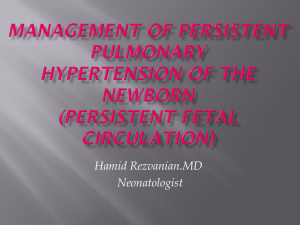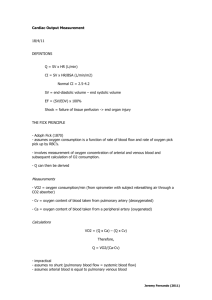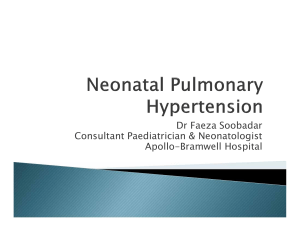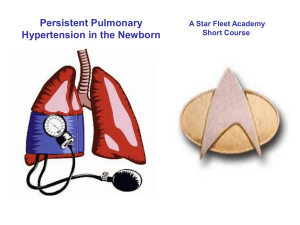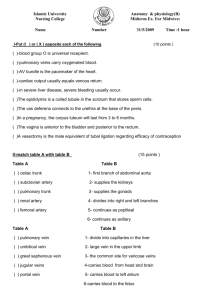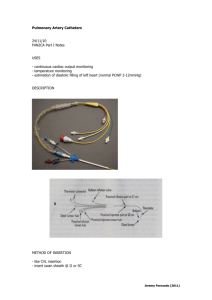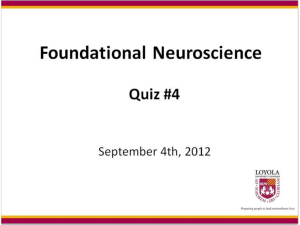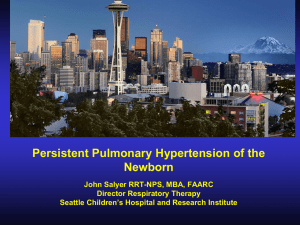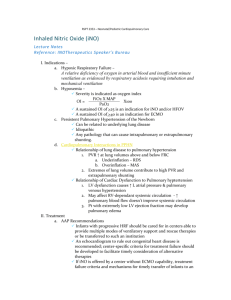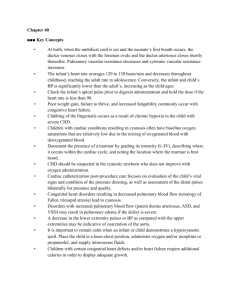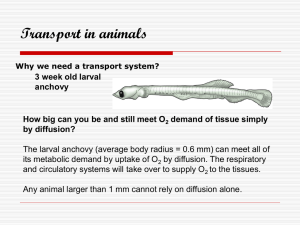Persistent Pulmonary Hypertension in the Newborn
advertisement
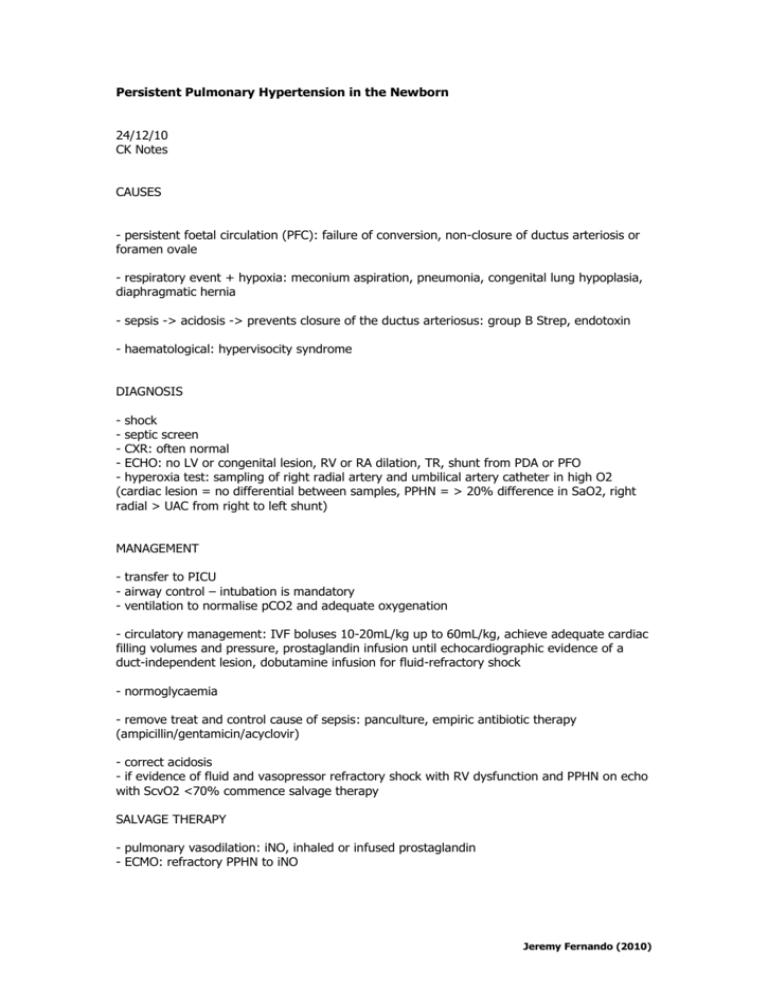
Persistent Pulmonary Hypertension in the Newborn 24/12/10 CK Notes CAUSES - persistent foetal circulation (PFC): failure of conversion, non-closure of ductus arteriosis or foramen ovale - respiratory event + hypoxia: meconium aspiration, pneumonia, congenital lung hypoplasia, diaphragmatic hernia - sepsis -> acidosis -> prevents closure of the ductus arteriosus: group B Strep, endotoxin - haematological: hypervisocity syndrome DIAGNOSIS - shock - septic screen - CXR: often normal - ECHO: no LV or congenital lesion, RV or RA dilation, TR, shunt from PDA or PFO - hyperoxia test: sampling of right radial artery and umbilical artery catheter in high O2 (cardiac lesion = no differential between samples, PPHN = > 20% difference in SaO2, right radial > UAC from right to left shunt) MANAGEMENT - transfer to PICU - airway control – intubation is mandatory - ventilation to normalise pCO2 and adequate oxygenation - circulatory management: IVF boluses 10-20mL/kg up to 60mL/kg, achieve adequate cardiac filling volumes and pressure, prostaglandin infusion until echocardiographic evidence of a duct-independent lesion, dobutamine infusion for fluid-refractory shock - normoglycaemia - remove treat and control cause of sepsis: panculture, empiric antibiotic therapy (ampicillin/gentamicin/acyclovir) - correct acidosis - if evidence of fluid and vasopressor refractory shock with RV dysfunction and PPHN on echo with ScvO2 <70% commence salvage therapy SALVAGE THERAPY - pulmonary vasodilation: iNO, inhaled or infused prostaglandin - ECMO: refractory PPHN to iNO Jeremy Fernando (2010) PROGNOSIS - recovers over 3-5 days - normal tone and musculature of pulmonary artery occurs - good long term cardiovascular and survival if isolated Jeremy Fernando (2010)
